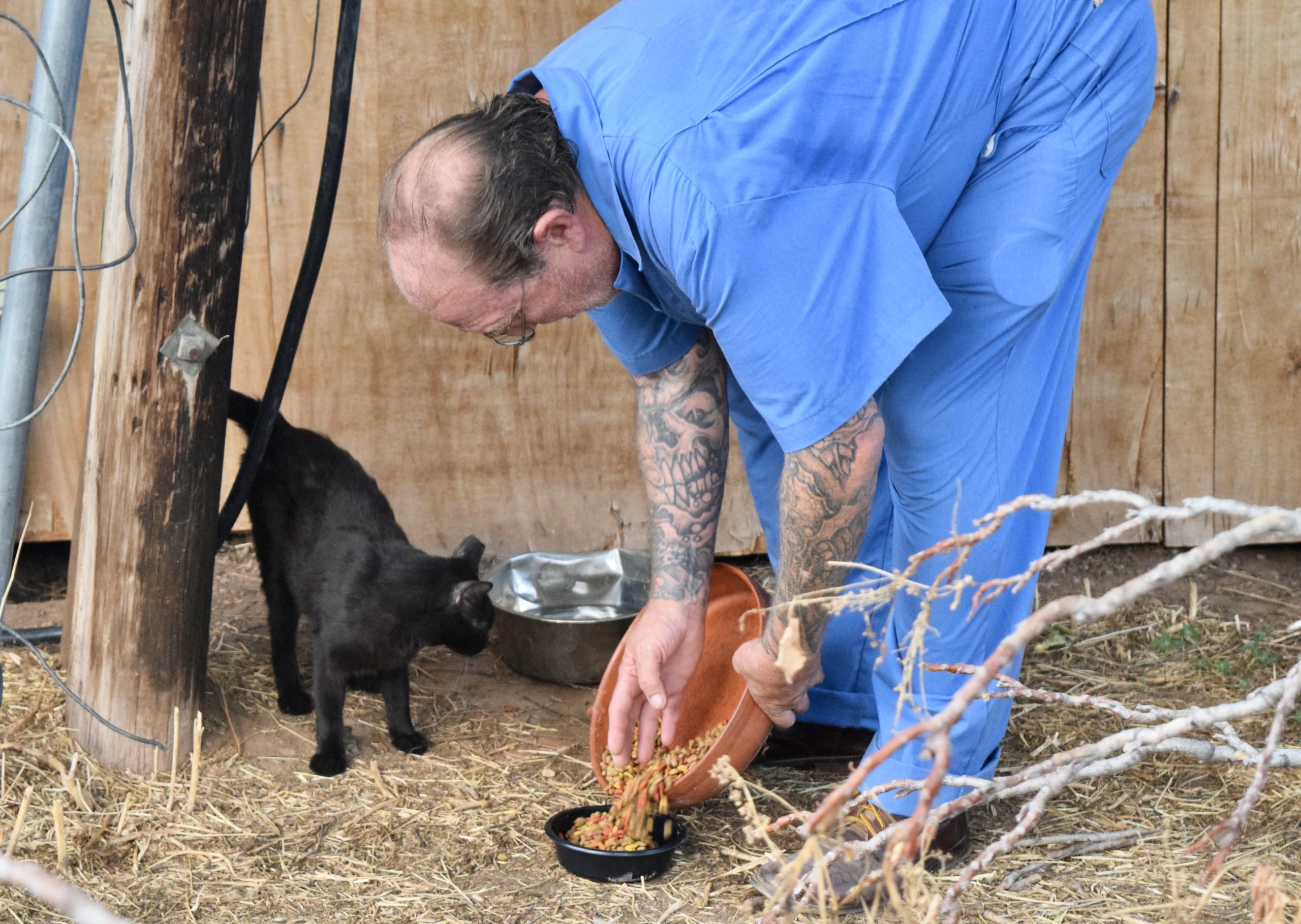Some information may be outdated.
This past summer, Moab resident Travis Garcia asked for community support in caring for a colony of “community” cats that live in the Walnut Lane neighborhood. Garcia visits the cats daily, feeding them and monitoring their health. Volunteers from the Humane Society of Moab Valley also care for the colony, and sterilize cats through their “Trap, Neuter, Return” program, which helps keep cat populations under control.
Now, Moab City is partnering with Garcia and the Humane Society to relocate the Walnut Lane felines. Garcia is relieved that the cats will have new homes before the city moves ahead with construction on a planned affordable housing development on Walnut Lane.
“That was my whole thing—to try to get the cats somewhere before the construction,” he said.
Sergeant Scott Finlayson was hired on to the Moab City Police Department in September, and he’s in charge of Animal Control—along with code compliance, code enforcement, and administration.
“I have tons of different responsibilities,” Finlayson said.
For example, he’s working on updating the department’s policies and procedures. However, he’s still making time to deal with animal control issues. After hearing from residents about the Walnut Lane colony, he checked out the situation and was surprised.
“I didn’t really understand the extent of the problem until I went down there,” he said.
Finlayson gathered a group of experts, including representatives from the city’s animal shelter, the Humane Society, and city administrators, as well as Garcia.
“It took a while to assess and figure out what is going to be the best course to relocate these animals to a better environment,” Finlayson said. “The environment that they’re in right now is just not healthy for anyone involved.”
They outlined an approach of trapping two cats each week and finding them new homes. It’s not a quick process: the animals might need to be sterilized and vaccinated, and they need to be checked for communicable feline diseases. They also need to be quarantined away from other cats at the animal shelter.
In January, the Humane Society made a Facebook post advertising “working cats.”
“If you have rodents running rampant at your barn, warehouse or ranch our cats can help,” the post says. Community cats are not usually suitable for indoor pets, but they can be an asset for pest control; there is no adoption fee for these cats.
The group agreed that Garcia would be the best person to conduct the trapping, since the animals are accustomed to him.
Garcia has his own traps—sometimes he baits them with sardines, he said, but some of the cats are so comfortable with him that he can just pick them up and put them in a carrier. However, he’s trying to first catch any animals that still need to be spayed or neutered. Many, but not all, of the Walnut Lane cats have already been sterilized and identified with a “tipped,” or clipped, ear.
The Humane Society, which is funded by grants and donations, is taking on vaccination and sterilization. If it’s found that a cat has a disease that could negatively impact other cats, or it has some other medical problems that can’t be addressed, that cat will likely be put down. Finlayson said it’s sometimes the only practical option.
“We never want to put any animals down—I’m a huge animal lover and would never want to do that,” Finlayson said. “We don’t kill animals unless they’re nonviable.” He added that multiple opinions are consulted before deciding to put an animal down.
If the cats are healthy, they’ll go to new owners who want a “working cat,” or they’ll be relocated to other cat colonies managed by the Humane Society. Cats need time to adjust to their new homes. Finlayson and Garcia emphasized that they need to be kept in an enclosure and given time to get used to their new environment, and recognize where they can get food and water—otherwise they might try to return to their former home.
“This is a lot of people working together to get these cats in a better position,” Finlayson said. “The Humane Society, the city, the citizens. We want to make it more manageable for the residents down there.”
For information on adopting a cat, call the Humane Society of Moab Valley at 435-259-4862 or visit moabpets.org.
Appreciate the coverage? Help keep local news alive.
Chip in to support the Moab Sun News.





